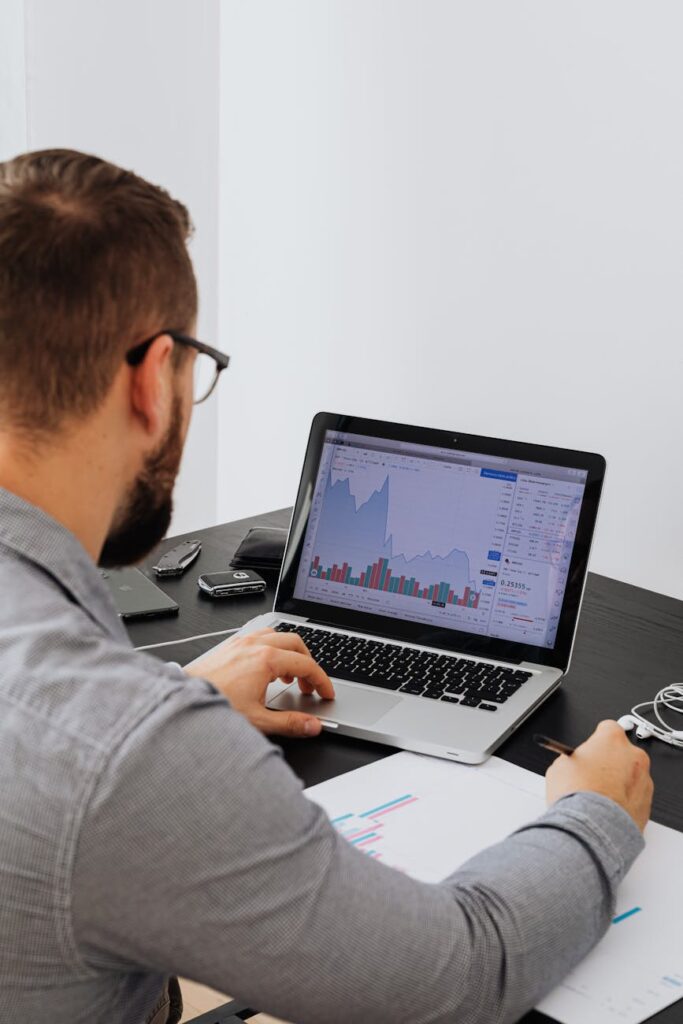You Did It. Now What? The Real Work Begins After the Buy Button.
So, you pulled the trigger. You navigated the exchange, you weathered the price chart vertigo, and you finally clicked ‘buy’. Congratulations. The feeling is a unique mix of excitement and maybe a little bit of terror. You’re officially in the game. But here’s a secret the crypto gurus don’t always scream from the rooftops: the purchase is the easy part. The moments that follow are infinitely more important for the long-term safety and success of your investment. Taking the right actions right after buying your first cryptocurrency is what separates a savvy investor from a future horror story on Reddit. It’s the difference between building a foundation and just, well, gambling.
Don’t panic. You’ve come to the right place. We’re going to walk through the exact, non-negotiable steps every single beginner needs to take to transform that first exciting purchase into a secure and well-managed asset. Think of this as your post-purchase checklist for entering the world of digital finance responsibly.
Key Takeaways
If you’re in a hurry, here’s the bottom line: Get your crypto off the exchange and into a personal wallet you control. Understand the massive difference between a hot (software) and cold (hardware) wallet. NEVER share your seed phrase or store it digitally. Start tracking your transactions immediately for both performance and tax purposes. And finally, stay skeptical and keep learning.
Step 1: Security Isn’t a Feature, It’s The Entire Foundation
Let’s get one thing straight right away. The cryptocurrency exchange where you bought your coins (like Coinbase, Binance, Kraken, etc.) is like a store. It’s a great place to shop for assets, but it’s a terrible place to store them long-term. Why? Because you don’t truly own them while they’re sitting there. You’re trusting a third party to hold them for you, and in the world of crypto, that’s a cardinal sin. You’ve probably heard the phrase: “Not your keys, not your coins.” This is what it means. Leaving your assets on an exchange exposes you to risks like exchange hacks, company insolvency, or your account being frozen for reasons you might never understand.
Get Your Crypto Off the Exchange. Right Now.
This is your first and most urgent task. It’s like buying a gold bar and then leaving it on the counter of the shop. You wouldn’t do that, would you? You’d take it home and put it in a safe. Your crypto is no different. The process of moving it is called a ‘withdrawal’, and you’ll be sending it to a ‘wallet address’ that you—and only you—control. This act of taking control is called self-custody, and it’s a core principle of cryptocurrency.
Choose Your Wallet: The Hot vs. Cold Battle
Okay, so where do you send it? To a cryptocurrency wallet. But not all wallets are created equal. They generally fall into two categories: hot and cold.
- Hot Wallets (Software Wallets): These are applications that live on your computer or phone (think MetaMask, Trust Wallet, Exodus). They’re called ‘hot’ because they are connected to the internet.
- Pros: They are super convenient for making frequent transactions, interacting with decentralized applications (dApps), and are usually free.
- Cons: Their connection to the internet makes them inherently more vulnerable to hacking, malware, and phishing attacks. They’re great for holding small amounts of ‘spending’ crypto, but not for your life savings.
- Cold Wallets (Hardware Wallets): These are small, physical devices (like a Ledger or Trezor) that look like a USB stick. They store your keys completely offline.
- Pros: This is the gold standard for security. Since your keys never touch the internet, they are virtually immune to online hacking attempts. This is where you store the crypto you plan to hold for the long term (or ‘HODL’).
- Cons: They cost money ($60-$200+) and are slightly less convenient to use, as you have to physically plug in and approve transactions on the device. It’s a tiny price to pay for peace of mind.
The bottom line: If you’ve invested an amount of money that would hurt to lose, you need a hardware wallet. It’s not optional. It’s a necessary investment to protect your primary investment.

Your Seed Phrase is Your Financial Lifeblood. Treat It That Way.
When you set up any proper self-custody wallet (hot or cold), you’ll be given a list of 12 or 24 random words. This is your seed phrase, or recovery phrase. This is, without exaggeration, the single most important piece of information you will now own. It’s the master key to your entire crypto vault. If you lose your phone or your hardware wallet breaks, this phrase is the *only* way to restore your funds.
Follow these rules as if your financial future depends on them, because it does:
- NEVER store it digitally. No screenshots. No notes app. No email drafts. No password manager. No cloud storage. Any of these can be hacked.
- Write it down on paper or, even better, stamp it into metal. Paper can burn or fade. Metal is far more durable.
- Store physical copies in multiple, secure locations. Think a fireproof safe at home and perhaps another at a trusted family member’s house.
- NEVER, EVER, EVER share it with anyone. No customer support agent, no helpful stranger in a Discord chat, no friendly YouTuber will ever need your seed phrase. Anyone who asks for it is a scammer. Period.
Think of it this way: Losing your seed phrase is like shredding your winning lottery ticket. Sharing your seed phrase is like handing a blank, signed check to a complete stranger on the street.
Step 2: Get Organized Before It Becomes a Mess
You’ve secured your assets. Fantastic. You’re already ahead of 90% of beginners. Now, let’s make sure you can manage them effectively. Relying on your memory or a single exchange’s dashboard is a recipe for disaster, especially as you buy more assets across different platforms over time.
Track Your Portfolio Like a Professional
You need a central place to see all your holdings, their current value, and most importantly, your performance over time. This is where a portfolio tracker comes in. Services like CoinMarketCap, CoinGecko, Delta, or Koinly are essential tools. You can manually input your transactions or, in some cases, link your exchange accounts via read-only APIs for automatic tracking.
For every single transaction (buy, sell, or trade), you must record:
- The date of the transaction.
- The asset you bought or sold.
- The quantity.
- The price per unit in your local currency (e.g., USD, EUR).
- Any fees you paid.
This might seem tedious, but it’s non-negotiable for two reasons. First, it’s the only way to know your true profit or loss (your ‘P&L’). Second, you will desperately need this information for the next step.
Step 3: Acknowledge The Inevitable: Taxes
Ugh. I know. No one wants to talk about taxes. But ignoring this part of crypto can lead to massive headaches and financial penalties down the road. It’s crucial to understand the basics from day one.
Disclaimer: I am not a financial or tax advisor. This is for informational purposes only. Please consult with a qualified professional in your jurisdiction.
Understand What a ‘Taxable Event’ Is
In many countries, including the United States, cryptocurrency is treated as property, not currency. This means you owe taxes on any gains you make. A ‘taxable event’ occurs when you ‘dispose’ of your crypto. This includes:
- Selling your crypto for cash (fiat currency).
- Trading one cryptocurrency for another (e.g., trading Bitcoin for Ethereum).
- Using your crypto to buy a good or service (like a cup of coffee or a new laptop).
Simply buying and holding crypto in your wallet (HODLing) is generally not a taxable event. You only ‘realize’ the gain or loss when you sell, trade, or spend it. This is why all that record-keeping from the previous step is so critical. Your cost basis (what you paid) minus the value at the time you disposed of it determines your capital gain or loss. Specialized crypto tax software like Koinly or CoinLedger can sync with your accounts and make this process thousands of times easier.

Step 4: Adopt a Mindset of Healthy Paranoia and Continuous Learning
After buying your first cryptocurrency, you’ve officially entered a space that is both revolutionary and filled with pitfalls. Your education and your skepticism are your best defenses.
Keep Your Scammer-Radar on High Alert
The crypto space is the new Wild West, and unfortunately, it’s crawling with scammers. They are clever, and they prey on newcomers. Be on the lookout for:
- Phishing Scams: Emails, tweets, or direct messages that look like they’re from an official exchange or wallet company, trying to get you to click a malicious link and enter your login details or seed phrase.
- Giveaway Scams: Posts from hacked celebrity/influencer accounts on social media promising to double any crypto you send to a specific address. If it sounds too good to be true, it is a scam 100% of the time.
- Fake Support Staff: If you ask for help in a public forum like Discord or Telegram, you will instantly receive DMs from people pretending to be support staff. They will eventually ask for your seed phrase or ask you to ‘validate your wallet’ on a sketchy website. Block them immediately.
Never Stop Learning
This industry moves at a blistering pace. Projects evolve, new technologies emerge, and narratives shift. The investment you made today will exist in a different context a year from now. Commit to learning. Don’t just watch the price. Read the whitepaper of the project you invested in. What problem does it solve? Who are its competitors? Follow intelligent, non-sensationalist voices on platforms like Twitter and listen to reputable podcasts. The more you understand the underlying technology and value proposition, the less you’ll be swayed by market volatility and the better your decision-making will be.
Conclusion
That initial click on the ‘buy’ button was a big deal, and you should be proud of taking a step into a new financial frontier. But the real work, the work that protects and grows your capital, happens now. By immediately prioritizing security, getting organized with portfolio tracking, understanding your tax obligations, and committing to ongoing education, you’re building a robust foundation. You’re moving from a passive speculator to an active, responsible owner of a digital asset. Welcome to the journey. You’re doing it right.


